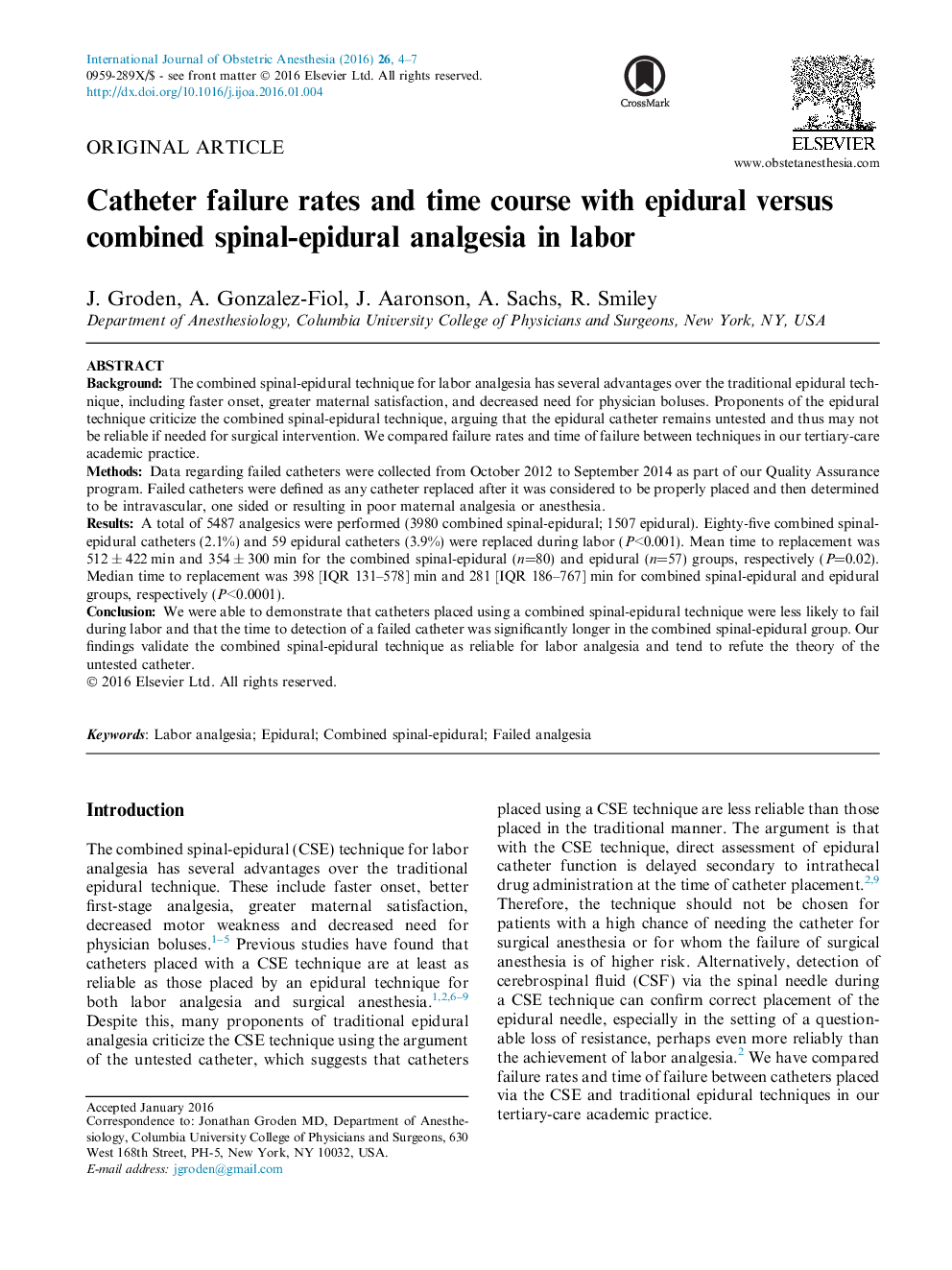| Article ID | Journal | Published Year | Pages | File Type |
|---|---|---|---|---|
| 2757428 | International Journal of Obstetric Anesthesia | 2016 | 4 Pages |
•We compared epidural and combined spinal-epidural failure in laboring parturients.•Catheters placed with an epidural technique were more likely to fail during labor.•Combined spinal-epidural catheters failed significantly later in labor.•Failure rates at cesarean section were equal between techniques.
BackgroundThe combined spinal-epidural technique for labor analgesia has several advantages over the traditional epidural technique, including faster onset, greater maternal satisfaction, and decreased need for physician boluses. Proponents of the epidural technique criticize the combined spinal-epidural technique, arguing that the epidural catheter remains untested and thus may not be reliable if needed for surgical intervention. We compared failure rates and time of failure between techniques in our tertiary-care academic practice.MethodsData regarding failed catheters were collected from October 2012 to September 2014 as part of our Quality Assurance program. Failed catheters were defined as any catheter replaced after it was considered to be properly placed and then determined to be intravascular, one sided or resulting in poor maternal analgesia or anesthesia.ResultsA total of 5487 analgesics were performed (3980 combined spinal-epidural; 1507 epidural). Eighty-five combined spinal-epidural catheters (2.1%) and 59 epidural catheters (3.9%) were replaced during labor (P<0.001). Mean time to replacement was 512 ± 422 min and 354 ± 300 min for the combined spinal-epidural (n=80) and epidural (n=57) groups, respectively (P=0.02). Median time to replacement was 398 [IQR 131–578] min and 281 [IQR 186–767] min for combined spinal-epidural and epidural groups, respectively (P<0.0001).ConclusionWe were able to demonstrate that catheters placed using a combined spinal-epidural technique were less likely to fail during labor and that the time to detection of a failed catheter was significantly longer in the combined spinal-epidural group. Our findings validate the combined spinal-epidural technique as reliable for labor analgesia and tend to refute the theory of the untested catheter.
